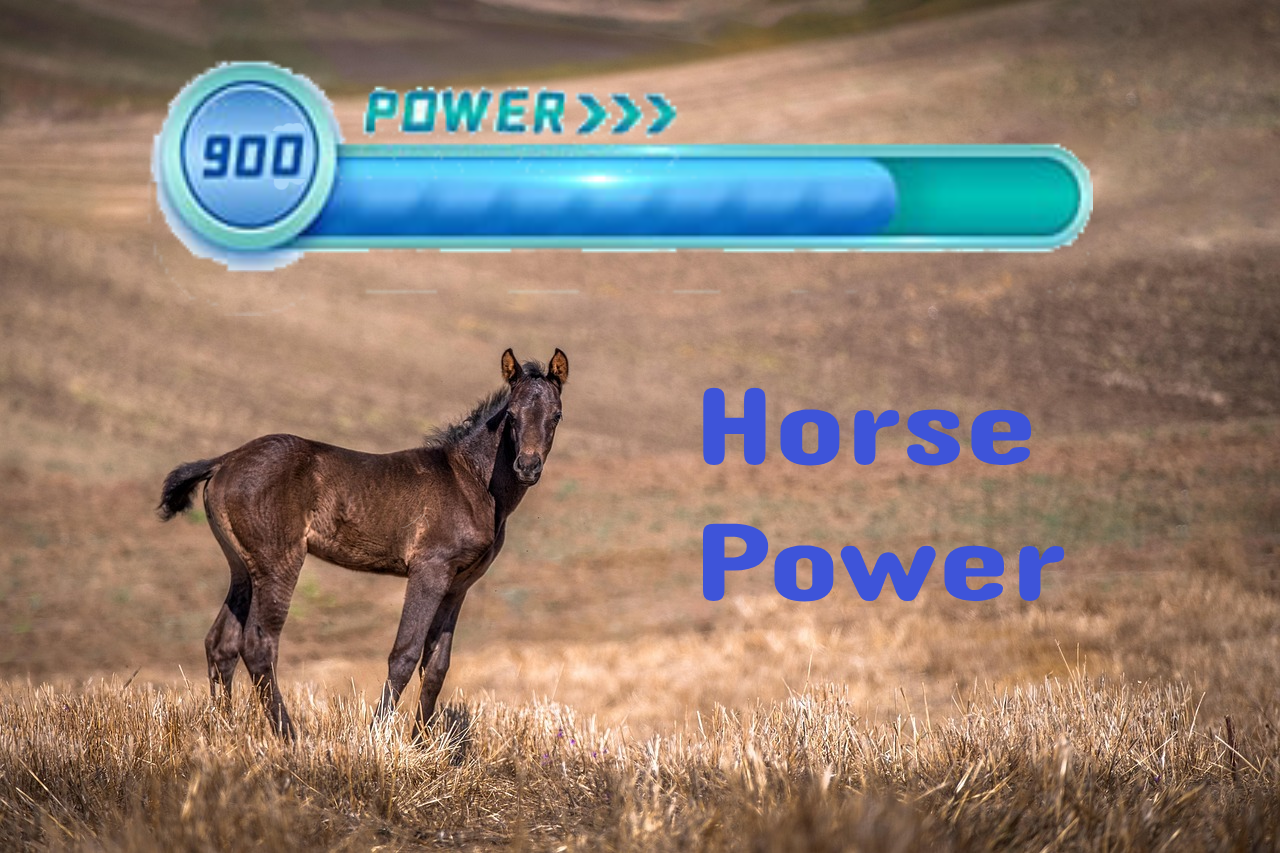Horse Power

Animals have not only been our faithful companions for recorded history, they have also played a role in industrialization of the world. Animal power has been in use for centuries, but in the 1800s, animal powered machinery started to become more popular. Until the late 1800s, animals provided the majority of power used in the United States, and even as far as 1900 animal power accounted for a full third of all power in the United States. Even now some animal-powered machines continue to help humanity.
"Of all animal motors the horse is the most important for farm use. The horse is
intelligent, willing, a fast walker as compared with other draft animals, and self-reproducing. Large-sized hoofs make it possible for horses to be used on comparatively soft ground." - Farm Motors(Potter, Andrey Abraham, 1917 p.272)
The greatest uses of animal power were in agriculture and transportation. In 1833, Obed Hussey patented the horse-drawn reaper. Using a mechanical reaper, two people and two horses could harvest a large field in a day. This invention greatly increased the efficiency of farming, allowing for farm plots to grow to hundreds or thousands of acres in size. Horse-powered inclined treadmills were also developed in the 1830s. With various attachments, farmers could use horses to help saw wood, pump water, churn butter, grind flour, and even power cranes. Due to the incline, a horse would continue walking forward while being moved backwards on the treadmill. Not only is this method far more humane than whipping them, you get more effective work out of the horse!
Horses and mules also pulled boats on the Ohio and Erie Canal. In the 1800s, horse-drawn boats were a main form of transportation in Ohio. On land, four horses might be able to pull a ton of freight in a cart a distance of twelve miles in a day, assuming a flat surface and a good road. However, pulling a boat on the relatively frictionless water surface of a canal allowed those same horses to pull fifty times as much weight, sometimes even up to 100 times their own bodyweight. Thus, horse-powered freight and passenger transportation reigned supreme. Even after steam and motor boats and railways became widespread, horse-drawn boats continued to operate and compete until the mid-1900s.
Horses didn't just pull boats with ropes, they also directly powered them. Horses would walk in circles on the deck around stationary posts, driving paddlewheels or other propulsion systems. Between 1814 and 1819, at least eight different ferry routes operated between lower Manhattan, Brooklyn, and New Jersey. According to newspaper accounts from the time, one ferry powered by eight horses could carry more than 200 passengers across the East River in 18 minutes or less, comparable to using a steamboat but much cheaper to construct and operate.
The treadwheel propelled boat, patented in 1819 by Barnabas Langdon, made horse-powered ferries more efficient. A rotating turntable would be placed slightly below the deck of the boat. Holes on the deck would allow horses to stand on the turntable and drive the paddlewheel by walking in place. This freed up valuable deck space and also eased the burden on the horses. With the use of inclined treadmills, horse-powered ferries became even more efficient. The treadmills could be placed on the sides of the hull, freeing up the last of the deck space, and replacement parts were readily available due to the popularity of the treadmills.
Ultimately, the construction of bridges and railways reduced the popularity of horse-powered ferries. The advent of the internal combustion engine proved to be the end of them. However, just because this transportation method was replaced does not mean it is completely gone. Today, small businesses near the Ohio and Erie Canal still allow you to take a horse-drawn boat ride.




